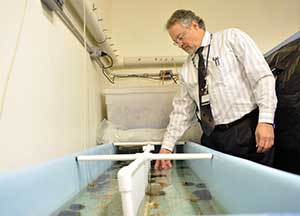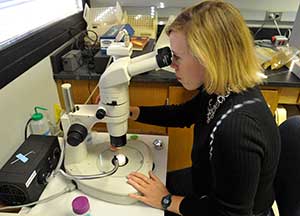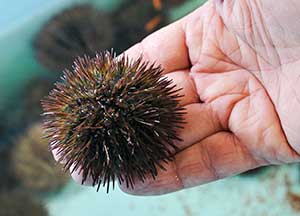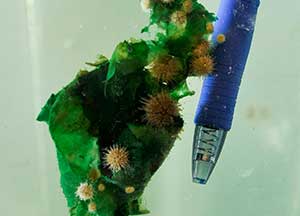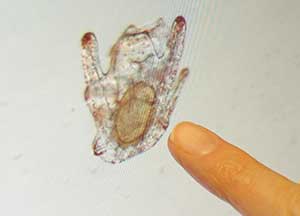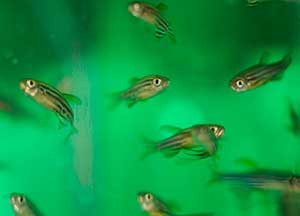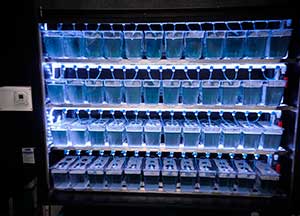Welcome
The Lab Animal Nutrition Core (LAN) was established in 2019 to study, advise, formulate and produce lab animal diets for standard and novel animal models with translation to human health. The LAN is directed by a team of comparative animal nutritionists led by Dr. Stephen Watts, Professor of Biology at UAB.
Recent reviews and surveys indicate that diet is an important variable affecting human morbidities (1-3) including obesity, type II diabetes, cardiovascular disease, colitis, and cancer. In support of the control of nutrition as a variable, NIH guidelines describe rigor and reproducibility as two of the cornerstones of science advancement, applying scientific rigor to the strict application of the scientific method (2). This approach promotes the highest level of scientific integrity, public accountability, and social responsibility in the conduct of science. The application of rigor and reproducibility supports nutrition as an essential component of experimental design in lab animal research (3). As a response, we have established a Lab Animal Nutrition Core within the NORC Animal Models Core to provide information on standard reference diets*, reference diets, and experimental diets and their role in experimental design, as well as the ability to formulate and produce diets for a variety of animal models.
- Noce A, Romani A, Bernini R. Dietary Intake and Chronic Disease Prevention. Nutrients. 2021; 13(4):1358.; https://www.mdpi.com/2072-6643/13/4/1358
- Adolph T.E. and H. Tilg. Western diets and chronic diseases. Nature Medicine, 2024; https://www.nature.com/articles/s41591-024-03165-6
- Afshin, A. et al. Health Effects of Dietary Risks in 195 Countries, 1990–2017: a systematic analysis for the Global Burden of Disease Study 2017. The Lancet. 2019;393:1958–1972; https://www.sciencedirect.com/science/article/pii/S0140673619300418?via%3Dihub
*Standard Reference Diets
- open formulation
- composed of a consistent and specific ingredient composition
- ingredients are purified (chemically defined) or semi-purified, containing consistently high levels of purity and nutrient composition
- ingredients readily available from commercial sources
- maintains a constant nutrient composition
- used as a universal nutritional control for experiments using the respective model organism
- reduces sources of lab-specific experimental bias caused by unintended nutritional factors
- allows temporal and spatial comparison among results of research investigations
Reference Diets
- open formulation
- uses purified, semi-purified, or practical (natural) ingredients
- ingredients are defined qualitatively and quantitatively
- serves as a benchmark diet for evaluating performance based on effectiveness in yielding good growth, high survival, reproductive outcomes, and other outcomes for comparison to that achieved with experimental diets for the species of interest
- useful as a control in evaluating different ingredients, nutrients, antinutritional factors, bioactive food components, or nutraceuticals
- not universally accepted as standard, as they may vary in ingredient and nutrient composition, both spatially and temporally, based on the research organism, the experimental design and research laboratory
Experimental Diets
- open formulation
- uses ingredients contained in the standard reference diet or reference diet
- ingredients and testable (experimental) compounds are defined qualitatively and quantitatively
- will be compared to standard reference or reference benchmark diets for evaluating performance
- useful in evaluating different ingredients, nutrients, antinutritional factors, bioactive food components, or nutraceuticals
The Importance of Diet in Research using Animal Models
Animal models have been an essential resource in medical research for decades. For animal models to be effective, variables that affect research outcomes must be controlled. Animal nutrition is a known critical variable that affects experimental outcomes and reproducibility. Securing animal health is critical for investigators using animal models, and proper nutrition is a key component of maintaining superior health in experimental protocols. For rodents, standard chow (natural ingredient) diets are universally produced by a number of commercial vendors. Unfortunately, these chow diets are produced by the inclusion of practical or natural ingredients, usually derived from agricultural byproducts, which themselves are often unrefined, chemically-undefined, and are variable in ingredient profiles (4). These diets are useful for colony maintenance, but lack rigor for use in almost all experimental trials. Similar chow-type diets have been developed for other model species such as fish, but these ingredient formulations are generally proprietary and promote weight gain, not health, making it difficult to determine cause and effect of specific nutrients or other components in experimental designs. Standard reference diets*, composed of known ingredients that are chemically-defined and constant in nutrient composition, are available for rodents, but in many laboratory species nutritionally complete (or replete) diets are not commercially available. For this reason, there should be an international emphasis on the development of standardized reference diets in recognized animal models.
Recently, it has become evident that typical rodent standard reference diets must be revisited (5, 6), as the last update occurred in 1993. The LAN is uniquely positioned to evaluate new formulations of rodent diets. Furthermore, the LAN has begun formulating mouse diets for UAB investigators in the School of Medicine, and there is strong interest from other investigators. These diets can be custom formulated to promote a particular physiological state, remove or add a potentially confounding nutritional variable, or include a pharmaceutical/nutraceutical intervention. We anticipate even greater interest in custom diet formulations in the future as more researchers are aware of this service.
- Comparisons of diets used in animal models of high fat feeding; 2008; doi: 10.1016/j.cmet.2008.03.014
- https://nutrition.org/rodent-diet-survey/
- 90th Anniversary Commentary: The AIN-93 purified diets for laboratory rodents-The development of the landmark article in The Journal of Nutrition and its impact on health and disease research using rodent models; 2018; https://doi.org/10.1093/jn/nxy121
Services and Fees
Consulting:
The LAN will initially consult with investigators concerning experimental design and nutritional requirements at no charge. Formulation of specific diets, particularly those which contain pharmacologic or nutraceutical compounds, is charged at $100 per hour.
Diet Preparation:
The LAN maintains a kitchen facility and equipment for measuring, mixing and extruding fresh diets with appropriately-sourced ingredients. Diets can include bioactive food components and can be as purchased or autoclaved, depending on the application. Typical diets are produced in 1-3 kg minimums; however, larger or smaller quantities can be requested. Specialty ingredients, bioactive food components, nutraceuticals, or pharmacological agents are priced according to market, or can be provided by the investigator.
Nutrient Analysis:
Ingredient composition and nutritional information can be provided on any diet or dietary ingredient, the cost depending on the compounds to be tested. Diets can be analyzed for proximate composition (macronutrient content) as well as vitamin or mineral composition. Specialty ingredients can be quantitatively assayed by request.
 Sea Urchin
Sea Urchin Mouse
Mouse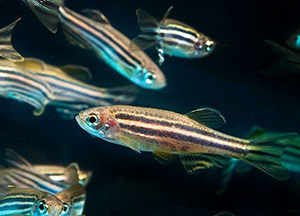 Zebrafish
ZebrafishResources
The LAN maintains a diet preparation facility that includes the following:
- Walk-in refrigeration storage of ingredient and diet stocks
- Two 20 quart planetary mixers with chopping end attachments for feed extrusion – Hobart model A200
- One 6 quart planetary mixer with pasta maker attachment for feed extrusion – Kitchen Aid Professional 600
- One single tier Jar mill with 5 jars of differing capacities for mixing and grinding – Gilson model LC-91. Many ingredients can be milled to sieve sizes of 200 um or less as needed
- A grinding mill for feed and ingredient grinding – Blendtec Kitchen Mill model 91
- A vibratory sieve shaker with various sized sieve screens for particle separation – Gilson model SS-10
- An air drying oven for feed drying – Gilson model OT-2
- Appropriate balances for precision inclusion of dietary ingredients or other compounds, including a Mettler Toledo Microbalance
Food-grade ingredients are purchased from approved commercial vendors. Ingredients are weighed and mixed in a Patterson-Kelley liquid-solids blender and/or a Hobart A-200. A mash is extruded through a chopper attachment on the Hobart, passed through a die to produce moist strands, which are air-dried to a moisture content of ca. 8%. Food preparation is accomplished in a kitchen that has 15 air changes per hour with all air exhausted outside. During the mixing process the mixer is housed in a custom box to block any dust, and technicians wear shoe covers, lab coats, dusk masks, and gloves. Dried feeds are labelled with production and expiration dates and coded for content. They are placed in vacuum-sealed or Zip-lock baggies (1 gallon) and are stored in a walk-in refrigerator. Foods are usually used within a six-month period. The blender is sanitized with appropriate disinfectants after each use.
Core Users
Core services are available to UAB investigators and other institutions. Past and current clients include the following:
- UAB investigators in the Department of Surgery, Psychology, Nutrition Sciences, Neuroscience, Biology, Pediatric Surgery
- USDA
- USDA Egg Nutrition Council
- Texas A&M University
- NIH Xiphophorus Genetic Stock Center at Texas State University
- The University of Utah
- Children’s Boston Hospital
- Harvard University
- Duke University
- Auburn University
- The Zebrafish International Resource Center, University of Oregon
- NIH/NHGRI
- NIH/NIMH
- Meridian Biotech, Inc.
- Biowish Technologies, Inc.
- Birmingham Southern College
Recently, the NIH asked the LAN to provide samples of zebrafish lab diets to their Animal Program Director in the Office of Laboratory Animal Medicine in the National Human Genome Research Institute located in Maryland. Future collaborations with NIH are warranted.
Additionally, the LAN participated in obtaining a NIH R-41 STTR Phase I and R-42 STTR Phase II with Meridian Biotech LLC to evaluate new protein sources for lab animal diets. This is an exciting collaboration between the core and business entities.
The LAN has worked with many vendors, including
- Envigo Teklab, Inc.
- Research Diets, Inc.
- Dyets
- Ziegler Brothers, Inc.
- Rangen
- MP Biomedical
Leadership and Contacts
Dr. Watts is recognized internationally as an expert in animal model nutrition. He is a Professor in the Department of Biology and a senior member of the NORC. He is director of the NORC Lab Animal Nutrition Core within the Animal Models Core, funded by P30DK056336, and co-director of the Zebrafish Research Facility at UAB. He has over 37 years of research experience at UAB and has published over 200 papers and book chapters. In recognition of his research activities, he is currently the only faculty at UAB that has been awarded the Ireland Award for Scholarly Distinction (highest award for faculty research scholarship), the Presidential Award for Teaching, and the Graduate School Award for Outstanding Mentorship to graduate students. He has experience in NIH R21, R01, R25, R41 and R42 awards, as well as NSF, USDA, and NOAA. He is the Chair of an NIH ORIP subcommittee on standardized diet development in model organisms. With this leadership experience, Dr. Watts can assist in development and execution of nutrition related projects. Phone 205-934-2045
Associates:
Jeff Barry (
Dr. Jeri Brandom (
Dr. Michael Williams (

